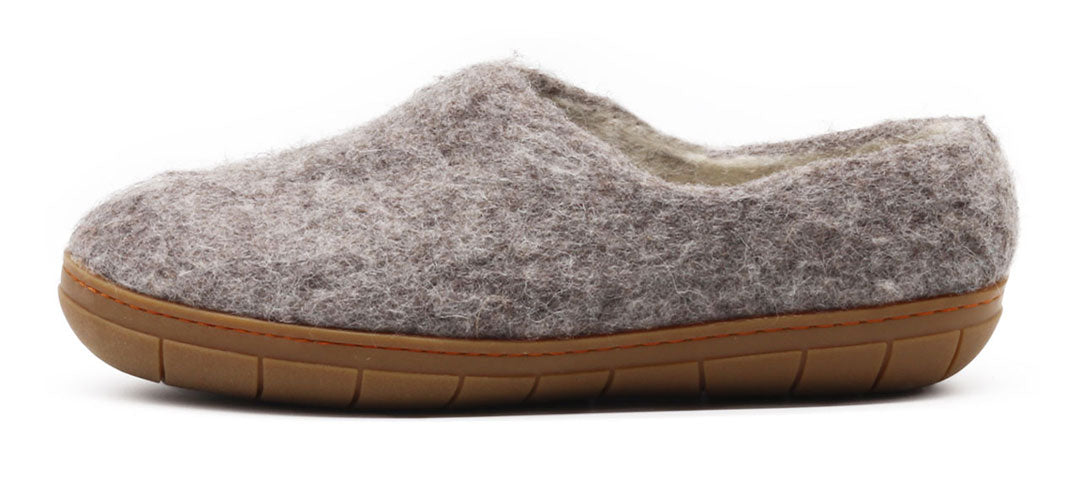The Science of Wool's Moisture-Wicking Ability
March 27, 2025 3 min read
Of all the natural fibers, wool is arguably the most remarkable stuff around. Renowned for its warmth, softness, and durability, wool also has a unique ability to manage moisture well, which is why it's a first-rate choice for footwear, clothing, and bed linens. Yet how, exactly, does wool actually pull moisture away from the skin, drying feet and keeping them comfortable? Let's dive into the intriguing science behind wool's moisture-wicking abilities and how it continues to be the superior option for all-season, breathability wear.
The Uniqueness of Wool's Structure
Wool fibers possess a unique structure, different from artificial and other natural fibers. One wool fiber contains overlapping scales in a similar configuration to shingles on a house. Below these scales is the cortex, made up of two types of cells with different rates of moisture absorption. This unequal moisture absorption creates a natural crimp to the fiber, with wool capable of holding air and building insulation as well as allowing moisture movement.
Besides, fibers of wool are coated with a natural water-repellent wax called lanolin. Wool repels liquid water but is still capable of absorbing and releasing moisture in the form of vapor because of this coating. This two-way property is what makes wool a moisture-wicking fabric.
How Wool Wicks Moisture Away from the Skin
In contrast with cotton, which traps and holds moisture, wool can transfer moisture from the skin and release it to the surrounding air. Several main mechanisms govern this process:
1. Absorption and Release of Moisture Vapor
Wool is hygroscopic, meaning that it will absorb as much as 30% of its weight in water without actually being wet. When you sweat, wool fibers absorb the moisture from your skin and transport it to the surface of the fabric, where it can evaporate into the air. This keeps your feet dry and comfortable, even under strenuous use.
2. Capillary Action and Fiber Structure
The natural crimp of wool fibers creates tiny air pockets, which help with temperature regulation and moisture transfer. The cellular nature of the fiber pulls moisture from the skin by capillary action, spreading it evenly through the fabric before it evaporates. This is similar to how plants transport water from their roots to their leaves.
3. Temperature Regulation and Breathability
Because wool is such a good moisture manager, it also regulates body temperature. In warm temperatures, wool will draw sweat away from the body and evaporate it into the air, cooling the wearer. In cold temperatures, wool will hold just enough moisture to generate heat through the mechanism of giving off heat as water evaporates, known as the heat of sorption.
The Benefits of Wool's Moisture-Wicking Ability in Footwear
When it comes to footwear, the moisture-wicking property of wool offers a number of benefits:
Dry, Comfortable Feet: Whether lounging around the house or hiking or working, wool dries your feet by pulling sweat away from your skin and evaporating it.
Odor Resistance: Unlike synthetic fibers, which hold sweat and bacteria, wool's natural property is to resist odor by keeping low moisture levels and preventing bacterial growth.
Less Blister Risk: Excess moisture can cause friction and blisters. Wool prevents this by maintaining the skin in a dry and comfortable state.
Temperature Regulation: Wool regulates your body temperature, warming your feet during winter and cooling them during summer.
Why Wool Is Better Than Synthetic Materials
While synthetic moisture-wicking products have been designed to mimic wool's properties, they typically don't compare. Synthetic fibers such as polyester use chemical treatments and engineered fabrics to wick away moisture. The treatments may deteriorate over time, reducing performance. Wool, on the other hand, naturally possesses these moisture-wicking qualities, offering lasting performance without chemical treatments.
Additionally, wool is sustainable and biodegradable, hence an environmentally friendly choice for green consumers. Unlike synthetic fibers, which contribute to microplastic contamination, wool breaks down naturally with passage of time, reducing environmental imprints.
Conclusion: Wool—The Ultimate Moisture-Wicking Material
Wool's inherent moisture-wicking, temperature-regulating, and odor-resistant properties make it an exceptional fabric for clothing and footwear. From warm slippers to hiking socks to everyday shoes, wool offers a comfortable and breathable experience throughout the year. By learning about the science behind wool's moisture-wicking properties, we can see why this incredible fiber remains a top pick for those who want superior comfort and performance.
So the next time you slip into a pair of wool slippers or shoes, remember—you're not just wearing a warm piece of footwear; you're benefiting from the incredible natural engineering of wool, drying your feet, keeping them fresh and comfortable all day long.
Subscribe
Sign up to get the latest on sales, new releases and more …




